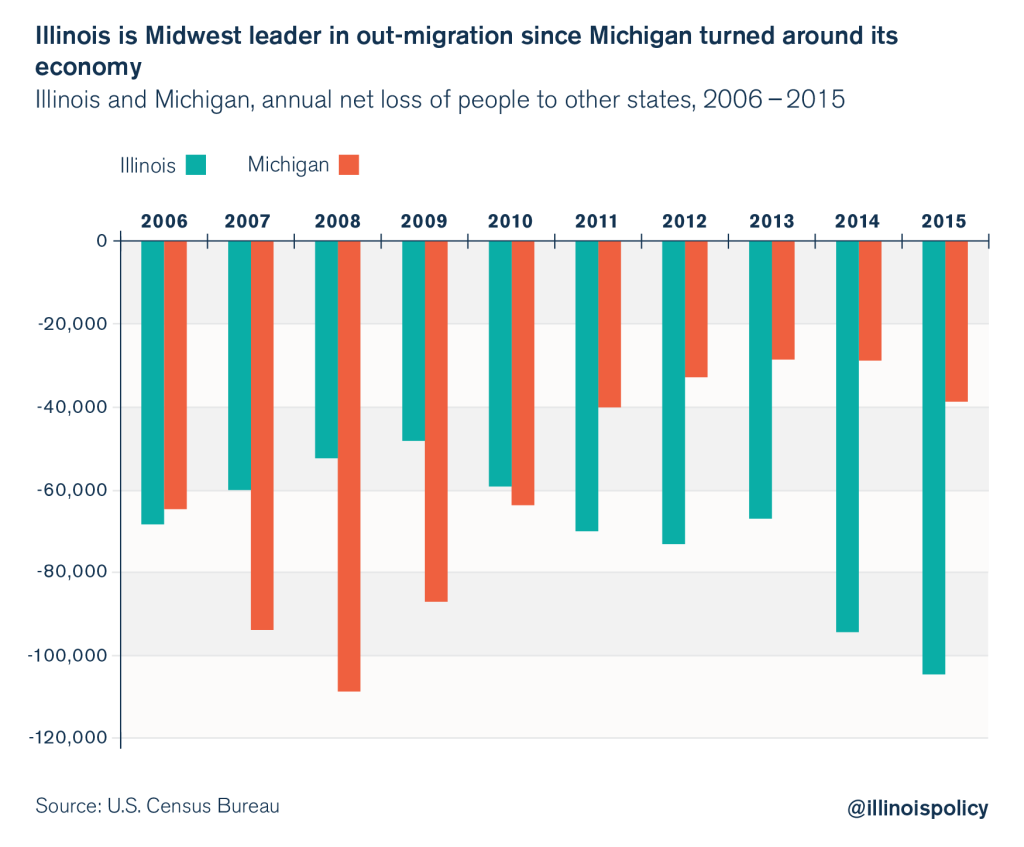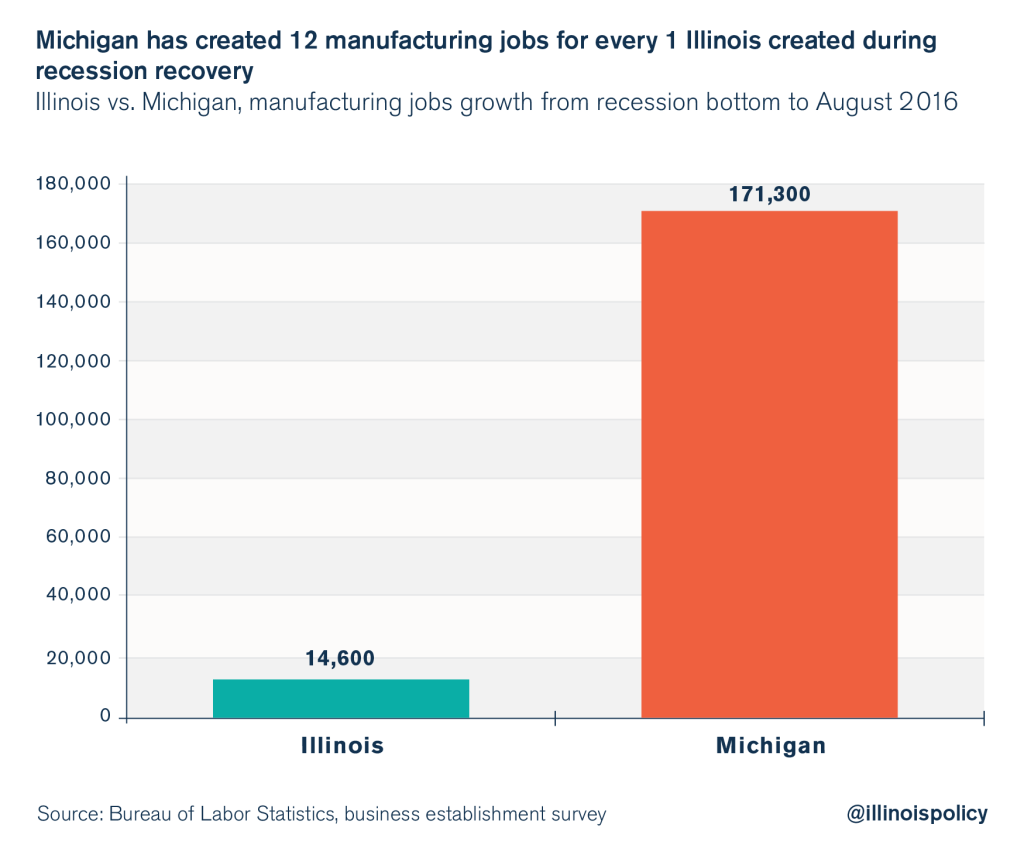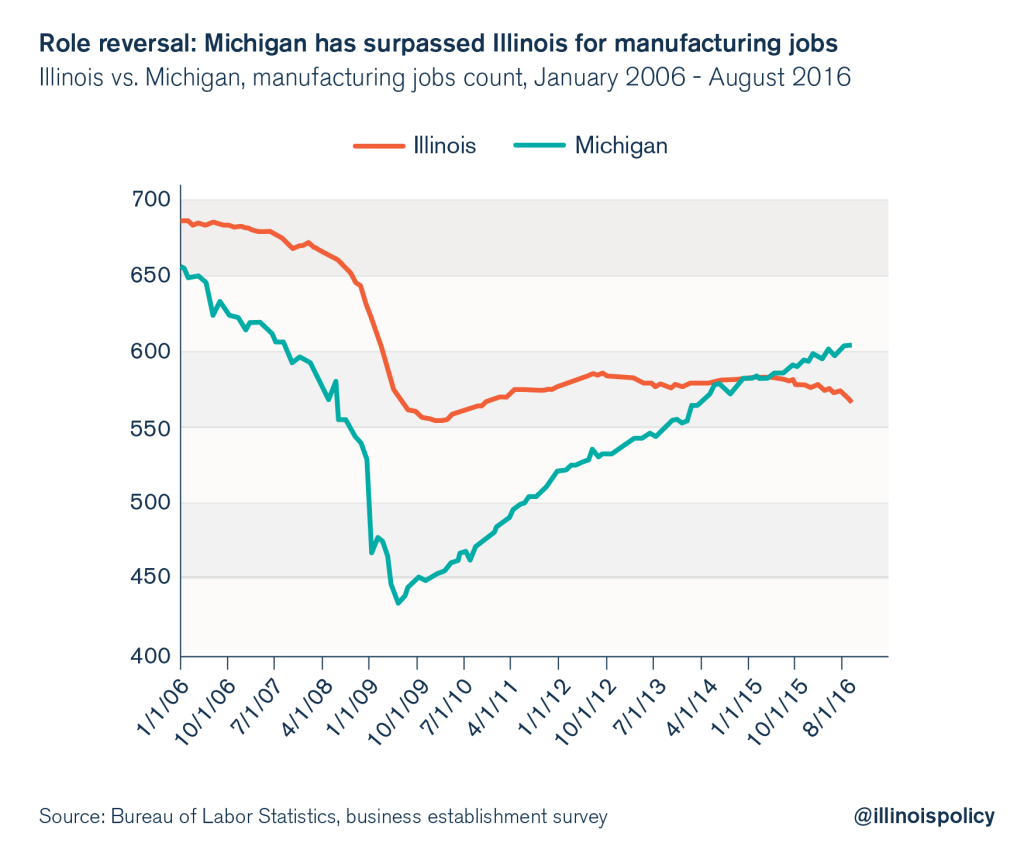Michigan vs. Illinois: Manufacturing and out-migration
Years of job-killing policies in Illinois have pushed residents out of the state, while nearby Michigan has taken an alternate, pro-growth approach to turn it around.
Illinois was not always the Midwest’s leader in losing residents to other states. In 2006, both Michigan and Illinois each lost slightly more than 65,000 people to other states on net. And in 2008, in the throes of the Great Recession and the near collapse of the auto industry, Michigan lost 110,000 people, on net – more than even Illinois’ heaviest loss of 105,000 people in 2015.
But Michigan has since retooled its economy, brought down taxes and enacted a statewide Right-to-Work law. Those factors combined with a restructured auto industry helped Michigan bounce back and lower out-migration.
On the other hand, Illinois’ out-migration problems have become even worse since the Great Recession. For the last two consecutive years, Illinois has lost a record number of people to other states, with out-migration increasing so rapidly that Illinois is the only state in the Midwest where the overall population has contracted for two years in a row. In the most recent year of data, Illinois lost 105,000 residents on net compared with Michigan’s loss of 39,000.
In contrast with Michigan, Illinois has had weak economic growth and increasing out-migration
Illinois and Michigan’s reversal of out-migration positions has happened in tandem with Illinois’ years of weak industrial jobs growth.

Michigan’s migration numbers have improved in large part because of the state’s resurgent manufacturing sector. Since the depths of the Great Recession, Michigan has regained 12 manufacturing jobs for every one regained in Illinois. Michigan’s bounce-back has netted the state 171,000 manufacturing jobs since the recession bottom, while Illinois has regained fewer than 15,000 manufacturing jobs.

Illinois and Michigan have reversed positions with respect to total manufacturing employment, too. In 2015, Michigan surpassed Illinois for total manufacturing jobs. Illinois shed 6,200 manufacturing jobs in 2015 and another 8,000 in the first eight months of 2016.
What can Illinois do to halt its exodus of industrial jobs and people?
Illinois politicians should listen to the state’s manufacturing community. Greg Baise, president and CEO of the Illinois Manufacturers’ Association, recently spoke to the City Club of Chicago to lay out the commonsense reforms manufacturers need to invest with confidence again in Illinois. Baise’s list included:
- Spending reform to put Illinois’ fiscal house in order, including constitutional pension reform
- Tax reform including lower property taxes, elimination of the estate tax and the removal of the harmful pyramiding of the sales tax on business inputs
- Comprehensive workers’ compensation reform to bring costs in line with those in surrounding states
- Closing the skills gap with more training programs to create a pipeline of manufacturing talent
These policy changes have been far too long in coming, and the result is Illinois manufacturers looking to invest in new facilities in other states, and sometimes leaving Illinois altogether. Where the investment dollars go, skilled workers will eventually follow. Until Illinois sets more balanced pro-growth industrial policies, both manufacturing companies and their workers will continue to leave for other states.
